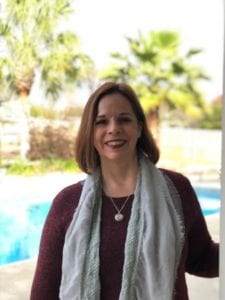
John C. Maxwell has been identified as one of the world’s most influential leaders. He is passionate to equip everyone to live a life that really matters. We are honored to welcome John back to The Global Leadership Summit.
A business executive. A softball coach. A classroom teacher. A volunteer coordinator. A parent… Whether you’re one of these things or all of these things, one thing remains true: You are a leader.
But where are you on your leadership journey, and where do you go from here? Over my years of teaching about leadership, that question exists at the heart of so many leaders. Everyone wants to know where they stand and how to get to the next level. And you are probably no different!
That’s why I developed the 5 Levels of Leadership paradigm in my book, Developing the Leader Within You, and then expanded it in my book, The 5 Levels of Leadership. I wanted to help leaders understand and increase their effectiveness. While there is more to this teaching than space in this blog, today I want to offer a general overview of the 5 Levels as a reminder that you are still on your way as a leader—and so am I! So, feel free to bookmark this page or print it out as a quick guide for your journey as a leader.
The 5 Levels of Leadership
Level 1—Position
The lowest level of leadership—the entry level, if you will—is position. It’s the only level that requires no ability or effort to achieve. After all, anyone can be appointed to a position! While nothing is wrong with having a leadership position; everything is wrong with relying only on that position to get people to follow. That’s because it only works if you have leverage (such as job security or a paycheck) over your followers. At Level 1, people only follow if they believe that they have to.
People who remain on the position level may find it difficult to work with volunteers. Why? Because position does not automatically result in influence, and volunteers are aware that they don’t have to follow anyone. They truly only follow if they want to.
But the news is not all bad about this level. It is a prime place for you to begin investing in your growth and potential as a leader. Use your time at this level learning to lead yourself—through priorities and self-discipline—and you’ll be ready to move to the next level.
Level 2—Permission
Level 2 is based on relationship. At this level, people choose to follow because they want to. In other words, they give the leader permission to lead them. To grow at this level, leaders work on getting to know their people and connecting with them. You can’t lead without people, which means you need to learn to like people if you want to lead well!
When you like people and treat them as individuals who have value, you begin to develop positive influence with them. Trust grows, which usually leads to respect. And the environment becomes much more positive—whether at home, on the job, at play or while volunteering. Level 2 is where solid, lasting relationships are built that create the foundation for the next level.
Level 3—Production
The best leaders know how to motivate their people to GTD–get things done! And getting things done is what Level 3 is all about. On this level, leaders who produce results build their influence and credibility. People still follow because they want to, but they do it because of more than the relationship. People follow Level 3 leaders because of their track record.
The production level is where leaders can become change agents. Work gets done, morale improves, profits go up, turnover goes down and goals are achieved. The more you produce, the more you’re able to tackle tough problems and face thorny issues. Leading and influencing others becomes fun, because when everyone is moving forward together, the team rises to another level of effectiveness.
It’s important to note here that the goal with the 5 Levels is not to move away from one level to grow at a new level. Instead, these 5 levels of leadership build upon each other. In other words, Level 3 leaders still need to do the things that make Level 2 happen. They just add Level 3 strategies to the mix. And as they become effective at Level 3, they are ready to layer on the goals of the next levels.
Level 4—People Development
Level 4 can be summed up in one word: reproduction. Your goal at this level is to identify and develop as many leaders as you can, by investing in them and helping them grow.
The reason is simple: When there are more leaders, more of the organization’s mission can be accomplished. The people you choose to develop may show great potential for leadership or they may be diamonds in the rough, but the main idea is the same: When you invest in them, you can reproduce yourself.
The more you raise up new leaders, the more you will change the lives of all members of the team. As a result, people will follow you because of what you’ve done for them personally. As an added bonus, some of those mentoring relationships are likely to last a lifetime.
So, to grow at the people development level, you need to make investing in leaders a priority, and take intentional steps every day to help them grow. Do that consistently, for long enough, and you may begin to reap the rewards of the next level.
Level 5—Pinnacle
The highest level of leadership is also the most challenging to attain; it requires longevity as well as intentionality. You simply can’t reach Level 5 unless you are willing to invest your life into the lives of others for the long haul. But if you stick with it, if you continually focus on both growing yourself at every level, and developing leaders who are willing and able to develop other leaders, you may find yourself at the Pinnacle.
The commitment to becoming a pinnacle leader is sizable, but so are the payoffs. Level 5 leaders develop Level 5 organizations—they create opportunities other leaders don’t. Pinnacle leaders create a legacy in what they do. People follow them because of who they are and what they represent. In other words, their leadership gains a positive reputation. As a result, Level 5 leaders often transcend their position, their organization and sometimes their industry.
There’s so much more I’d love to tell you, but let me leave you with this: Leadership is about growth—for yourself, your relationships, your productivity and your people. To lead well, you must embrace your need for continual improvement, and the 5 Levels provide a leadership GPS to help you with your journey. You must know where you are, to know where you’re going.
Otherwise, as the Cheshire Cat told Alice, “When you don’t know where you’re going, any road will get you there.”
This article originally appeared on johnmaxwell.com.






 Before attending The Global Leadership Summit in 2017 for the first time, Joanie Dickson, disabled US Air Force veteran, was deeply discouraged. Her PTSD has often attacked her confidence and paralyzed her journey in pursuit of her dreams, even to the point of attempted suicide.
Before attending The Global Leadership Summit in 2017 for the first time, Joanie Dickson, disabled US Air Force veteran, was deeply discouraged. Her PTSD has often attacked her confidence and paralyzed her journey in pursuit of her dreams, even to the point of attempted suicide.







Recent Comments